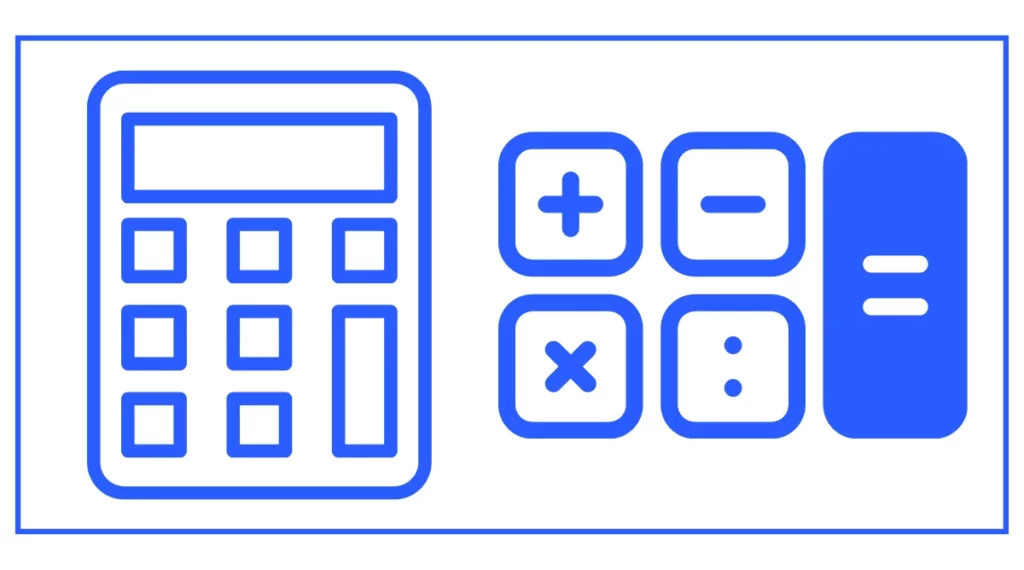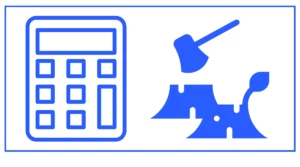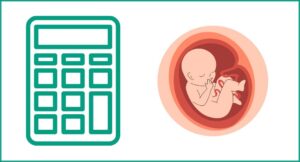10 Key Calculator
Are you looking for a free 10 key calculator?
This free online ten key calculator allows you to do everyday math easily.
Whether you want to add, subtract, multiply, or add, this free calculator is available for your help.

You might be interested in converting days to weeks, finding lawn mowing costs, or calculating your next anniversary date.
What is a 10-Key Calculator?
A 10-key calculator is a specialized calculator designed for rapid data entry and basic arithmetic operations. It gets its name from the 10 number keys (0-9) arranged in a 3×3 grid with the zero key at the bottom, similar to a telephone keypad. This layout allows for quick and accurate entry of numerical data using only one hand.
Unlike standard calculators, many 10-key calculators also include a printing function, which produces a paper tape record of calculations. This feature is particularly useful for accounting and auditing purposes, as it provides a physical record of all entries and results.
Key Features of a 10-Key Calculator
1. Numeric Keypad
The primary feature of a 10-key calculator is its numeric keypad. The keys are typically larger and more tactile than those on a standard calculator, allowing for faster and more accurate data entry.
2. Printing Capability
Many 10-key calculators are equipped with a printer that produces a paper tape of all calculations. This feature is essential for record-keeping and error-checking in accounting and financial applications.
3. Memory Functions
Most 10-key calculators include memory functions that allow users to store and recall numbers, making complex calculations easier and more efficient.
4. Special Function Keys
In addition to basic arithmetic operations, 10-key calculators often include special function keys for tasks such as calculating percentages, adding or subtracting tax, and performing currency conversions.
5. Large Display
To enhance readability, 10-key calculators typically feature a large, easy-to-read display that shows both the current entry and the running total.
How to Use a 10-Key Calculator
Learning to use a 10-key calculator effectively can significantly improve your speed and accuracy in numerical data entry. Here’s a step-by-step guide to get you started:
1. Proper Hand Positioning
Place your hand over the keypad with your index finger on the 4 key, middle finger on the 5 key, ring finger on the 6 key, and pinky on the Enter or Plus key. Your thumb should rest on the zero key.
2. Basic Number Entry
Practice entering numbers without looking at the keypad. Start with single digits and gradually work up to longer numbers. Focus on accuracy first, then speed.
3. Using the Decimal Point
When entering decimal numbers, use your ring finger to press the decimal point key. This allows you to maintain your hand position on the main numeric keys.
4. Addition and Subtraction
To add numbers, enter the first number and press the plus key. Enter the second number and press the equals key to see the result. For subtraction, use the minus key instead of the plus key.
5. Multiplication and Division
Enter the first number, press the multiplication or division key, enter the second number, and press the equals key to calculate the result.
6. Using the Memory Functions
Most 10-key calculators have memory functions accessed through keys labeled M+, M-, MR, and MC. These allow you to store, add to, subtract from, recall, and clear numbers from memory.
7. Correcting Errors
If you make a mistake, use the clear entry (CE) key to erase the last number entered without clearing the entire calculation. The clear (C) key will erase the entire current calculation.
Applications of 10-Key Calculators
10-key calculators find use in various professional settings:
1. Accounting and Bookkeeping
Accountants and bookkeepers use 10-key calculators to quickly enter and verify financial data, reconcile accounts, and prepare financial statements.
2. Data Entry
In roles that require extensive numerical data entry, such as inventory management or payroll processing, 10-key calculators can significantly speed up the process.
3. Banking and Finance
Tellers and financial analysts often use 10-key calculators for quick calculations and record-keeping.
4. Retail
Cashiers and inventory managers may use 10-key calculators for tasks like counting cash, calculating discounts, or updating stock levels.
Choosing the Right 10-Key Calculator
When selecting a 10-key calculator, consider the following factors:
1. Printing vs. Non-Printing
Decide whether you need a printing function. While useful for record-keeping, non-printing models are often more compact and affordable.
2. Display Size and Type
Look for a calculator with a large, clear display. Some models offer dual displays showing both the current entry and the running total.
3. Power Source
Consider whether you prefer a battery-operated model for portability or a corded electric model for consistent use in one location. Some calculators offer dual power options.
4. Special Functions
Assess which special functions you need, such as tax calculations, currency conversion, or profit margin computations.
5. Durability
If you’ll be using the calculator frequently, invest in a sturdy model with high-quality keys that can withstand heavy use.
Tips for Efficient 10-Key Calculator Use
To maximize your efficiency with a 10-key calculator, consider these tips:
- Practice regularly to build muscle memory for the key positions.
- Use the touch method, entering numbers without looking at the keypad.
- Utilize the memory functions for complex calculations involving multiple steps.
- Keep your calculator clean and well-maintained to ensure smooth operation.
- Learn and use keyboard shortcuts for frequently performed calculations.






